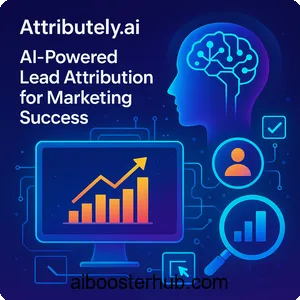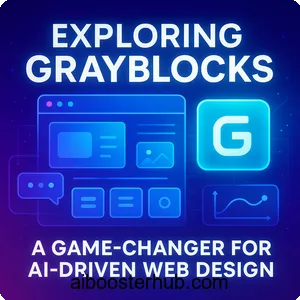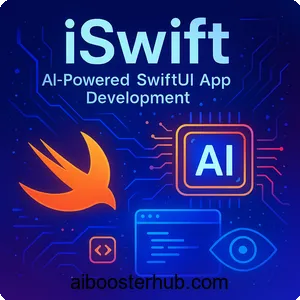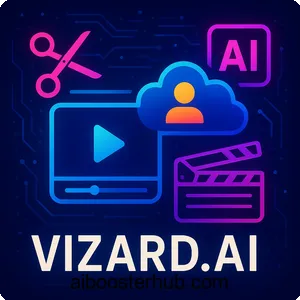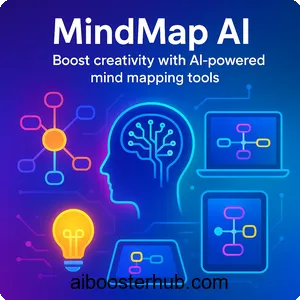Hugo Blox: Ultimate AI website builder for creators & SEO success
Creating a website that stands out in the crowded digital space is a challenge, especially for those in the artificial intelligence (AI) community who want to showcase their research, tools, or innovations. Hugo Blox, a powerful website builder, offers a no-code solution tailored for creators, researchers, and AI enthusiasts. This article dives deep into Hugo Blox, exploring its features, uses, benefits, and a step-by-step usage guide, making it an ideal tool for building professional AI-focused websites.

Content
Toggle1. Introduction to Hugo Blox
What is Hugo Blox?
Hugo Blox is an open-source website builder designed to empower creators, researchers, and professionals, particularly those in the AI field, to craft stunning, SEO-optimized websites without coding expertise. Built on the Hugo static site generator, it combines speed, flexibility, and a modular block system to create everything from academic portfolios to tech blogs and landing pages. Its no-code approach makes it accessible to AI enthusiasts who want to focus on content rather than technical complexities.
Why Hugo Blox suits AI professionals
AI professionals, from researchers to startup founders, need websites that showcase their work, attract collaborators, and engage audiences. Hugo Blox is tailored for this purpose, offering templates like academic CVs, lab portfolios, and documentation sites that align with the needs of the AI community. Its integration with tools like Jupyter, ORCID, and BibTeX streamlines the process of displaying research papers, code snippets, and data-driven projects, making it a go-to platform for AI-driven content creators.
The open-source advantage
As an open-source platform, Hugo Blox fosters a collaborative community, with over 10,000 GitHub stars and a 3,000+ member Discord channel. This ensures continuous improvements and access to a wealth of resources, which is particularly appealing to AI professionals who value open science and innovation. The platform’s commitment to open source means users control their content in Git repositories, avoiding lock-in with proprietary platforms.
2. Key features of Hugo Blox
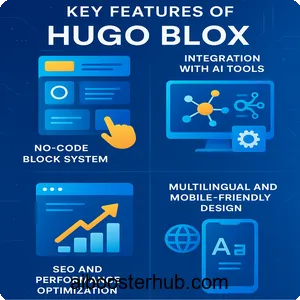
No-code block system
Hugo Blox’s standout feature is its modular block system, allowing users to build pages by dragging and dropping pre-designed components. These blocks include hero sections, testimonials, publication lists, and contact forms, enabling AI professionals to create tailored layouts for showcasing algorithms, datasets, or AI tools. The system supports Markdown, making content creation as simple as writing an email, which is ideal for non-technical users.
Integration with AI tools
For AI practitioners, Hugo Blox offers seamless integrations with tools like Jupyter Notebooks, RStudio, and Zotero. These allow users to embed code, LaTeX math, or visualizations directly into their sites. For instance, an AI researcher can display a machine learning model’s output or a neural network diagram without needing to code the frontend. The platform also syncs with ORCID and Google Scholar to automatically update publication lists, saving time for busy researchers.
SEO and performance optimization
Hugo Blox generates static sites that load up to 10 times faster than dynamic platforms like WordPress, a critical factor for SEO and user experience. Its pre-rendered pages reduce server load and achieve high Lighthouse scores, boosting search engine rankings. This is especially valuable for AI startups aiming to attract traffic to their tools or services. The platform also includes rich SEO meta tags and schema, ensuring AI content is discoverable.
Multilingual and mobile-friendly design
With over 50 light and dark color themes and 34+ language packs, Hugo Blox caters to a global AI audience. Its mobile-friendly templates ensure that websites look polished on any device, from smartphones to desktops. This is crucial for AI professionals targeting diverse audiences, such as international conferences or global collaborators.
Customizable templates
Hugo Blox provides a variety of templates, including academic CVs, portfolios, blogs, and documentation wikis. These are highly customizable, allowing AI creators to tweak layouts, colors, and fonts using Tailwind CSS or Hugo’s HTML template system. Whether you’re building a site for an AI conference or a personal research portfolio, the templates offer flexibility without sacrificing simplicity.
3. Uses of Hugo Blox for AI professionals
Academic and research portfolios
AI researchers can leverage Hugo Blox to create professional portfolios that highlight their publications, talks, and projects. The platform’s BibTeX and ORCID integrations allow for automatic updates of research papers, ensuring CVs remain current. For example, Dr. Sarah Yang, an AI researcher, reported a 3x increase in citations after launching her Hugo Blox site, thanks to its seamless publication showcase.
AI startup landing pages
Startups in the AI space can use Hugo Blox to build SEO-optimized landing pages to attract investors, partners, or users. The platform’s one-click deployment to GitHub Pages or Netlify simplifies the process, while premium templates provide a professional look that instills credibility. Dr. Emily Roberts noted that her startup’s Hugo Blox site helped secure Series A funding due to its polished design.
Technical documentation and wikis
For AI developers creating tools or libraries, Hugo Blox’s documentation template is a game-changer. It supports Markdown, code highlighting, and diagrams, making it easy to share technical notes or API documentation. A developer reported a 60% reduction in onboarding time after migrating their docs to Hugo Blox, as the block system simplified content organization.
Online courses and blogs
AI educators can use Hugo Blox to create online courses or blogs to share knowledge on topics like machine learning or neural networks. The platform supports multimedia embedding, such as videos and galleries, making it ideal for interactive learning content. Its blog template allows AI bloggers to publish engaging posts with minimal setup.
Conference and event websites
Organizing an AI conference? Hugo Blox’s conference template simplifies the creation of event websites with schedules, speaker profiles, and registration forms. The platform’s Markdown-based content management ensures quick updates, which is perfect for dynamic events like AI symposia.
4. Benefits of using Hugo Blox
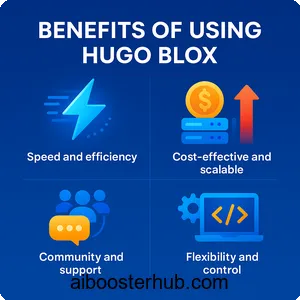
Speed and efficiency
Hugo Blox’s static site generation delivers blazing-fast load times, enhancing user experience and SEO. Unlike WordPress, which can suffer from plugin bloat, Hugo Blox’s minimalistic approach reduces page weight, resulting in faster rendering and lower hosting costs. This is particularly beneficial for AI websites hosting large datasets or interactive demos.
Cost-effective and scalable
With no database requirements, Hugo Blox eliminates the need for expensive hosting or maintenance. Free hosting options like GitHub Pages and Netlify make it accessible for AI startups or researchers on a budget. The platform scales effortlessly, handling thousands of pages without performance drops, ideal for growing AI projects.
Community and support
The Hugo Blox community, with its 3,000+ Discord members and extensive GitHub presence, provides robust support for AI users. Whether troubleshooting installation or customizing templates, the community offers quick answers. This collaborative environment aligns with the open-science ethos prevalent in AI research.
Flexibility and control
Hugo Blox gives users full control over their content through Git repositories, avoiding the lock-in of proprietary platforms. AI professionals can customize every aspect of their site, from navigation menus to footer designs, using simple YAML or Markdown files. This flexibility is perfect for tailoring sites to specific AI niches.
Enhanced visibility
The platform’s SEO optimization and fast load times increase visibility on search engines, crucial for AI professionals aiming to reach broader audiences. Features like automated publication syncing and rich media support ensure content is engaging and discoverable, driving traffic to AI tools or research.
5. How to get started with Hugo Blox
Installing Hugo Extended
To begin, install Hugo Extended, the full version required by Hugo Blox. On Windows, use Scoop to install dependencies via PowerShell. For Mac/Linux, Homebrew simplifies the process. Detailed instructions are available on the Hugo Blox documentation site. If you’re in a region with GitHub restrictions, like China, configure a proxy in the module.yaml file to ensure smooth downloads.
Choosing a template
Select a starter template from Hugo Blox’s library, such as the Academic CV, Blog, or Documentation template. Clone the template using Git (e.g., git clone https://github.com/HugoBlox/theme-academic-cv.git) or download it as a ZIP file. Extract the files to a folder and navigate to it via Terminal or PowerShell.
Customizing your site
Edit content using Markdown in tools like Visual Studio Code or GitHub Codespaces. Modify the config/_default/ files to tweak menus, themes, or SEO settings. For example, update menus.yaml to customize navigation links or params.yaml to adjust date formats and colors. The block system allows drag-and-drop customization for non-coders.
Deploying your site
Deploy your site in seconds using one-click options for GitHub Pages or Netlify. After committing changes to your GitHub repository, click “Deploy to Netlify” or “Deploy to GitHub Pages” from the template interface. No terminal commands or DevOps knowledge is needed, making it accessible for AI professionals focused on content over infrastructure.
Adding AI-specific content
Incorporate AI-specific content by embedding Jupyter Notebooks, code snippets, or publication lists. Use the Collection block to display research papers or the Hero block to highlight an AI tool’s features. The platform’s Markdown support makes it easy to add math equations or visualizations, enhancing the appeal for AI audiences.
6. Why Hugo Blox stands out for AI websites
Tailored for AI use cases
Hugo Blox is uniquely positioned for AI professionals due to its integrations with research and development tools. Whether you’re showcasing a machine learning model or a startup’s AI product, the platform’s flexibility and no-code approach make it a top choice. Its templates cater specifically to academic and tech-driven needs, setting it apart from generic builders.
Comparison with other platforms
Compared to WordPress, Hugo Blox offers superior speed and lower maintenance, avoiding plugin bloat and security risks. Unlike Jekyll, it doesn’t rely on a plugin ecosystem, simplifying customization for AI users. The platform’s static nature and Tailwind CSS integration provide a modern, efficient alternative to traditional CMS platforms.
Community-driven innovation
The open-source nature of Hugo Blox ensures it evolves with input from AI researchers and developers. Community contributions, like new blocks or templates, keep the platform cutting-edge, aligning with the fast-paced AI field. Joining the Discord or GitHub community allows users to shape its future while getting support.
Future-proofing your AI presence
With no lock-in and content stored in Git, Hugo Blox ensures your AI website remains future-proof. Its scalability and performance optimizations make it ready for growing audiences, whether you’re a researcher gaining citations or a startup scaling user engagement. The platform’s focus on SEO and speed guarantees long-term visibility.
7. Final thoughts
Hugo Blox is a game-changer for AI professionals seeking a fast, flexible, and no-code website builder. Its robust features, seamless integrations, and community support make it ideal for creating impactful online presences, from research portfolios to startup landing pages. By leveraging Hugo Blox, AI creators can focus on innovation while their websites shine in the digital landscape.



